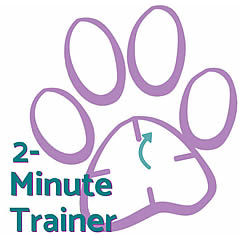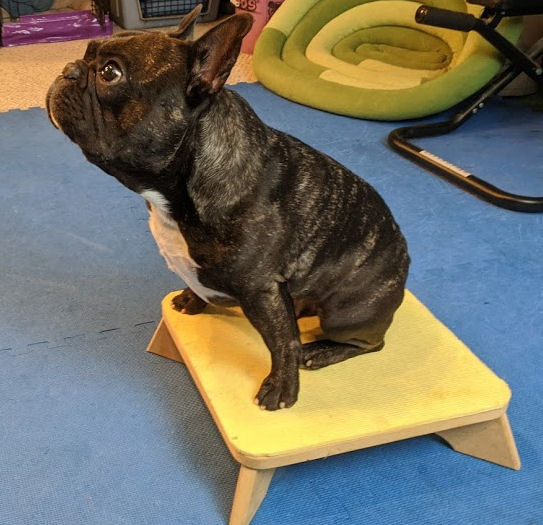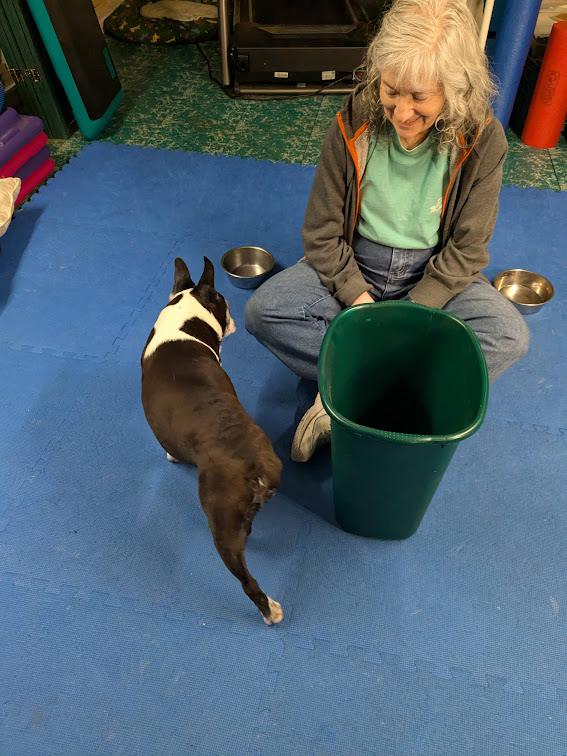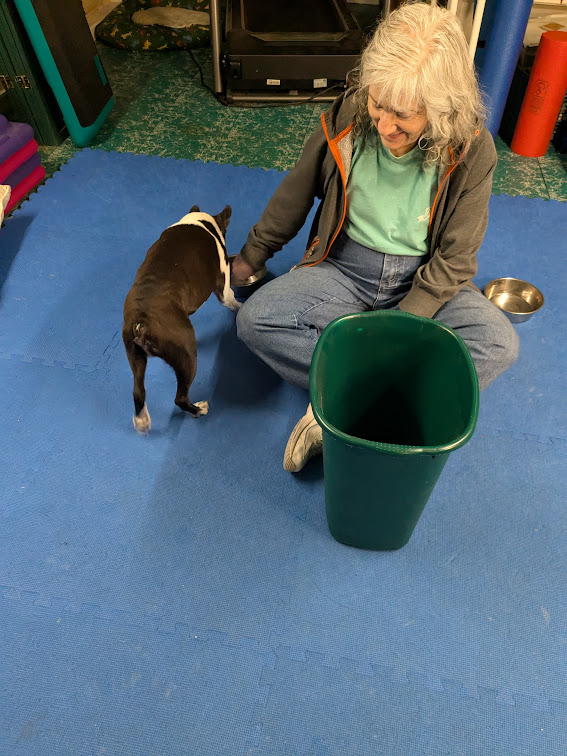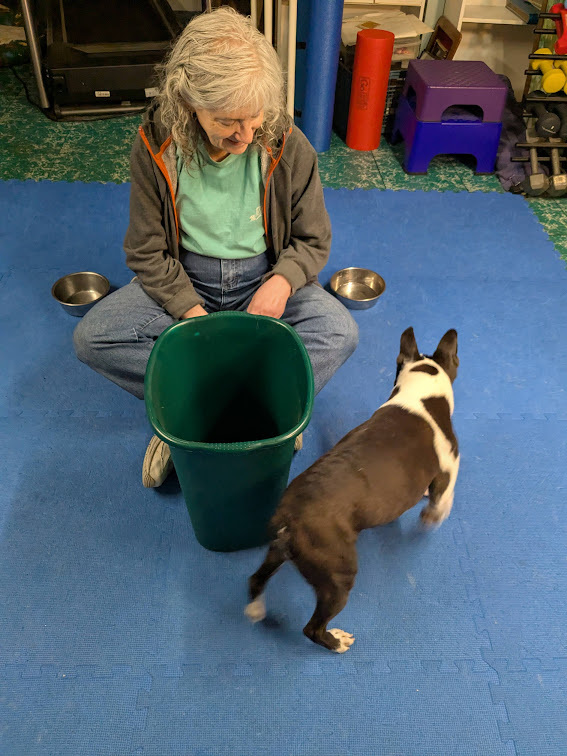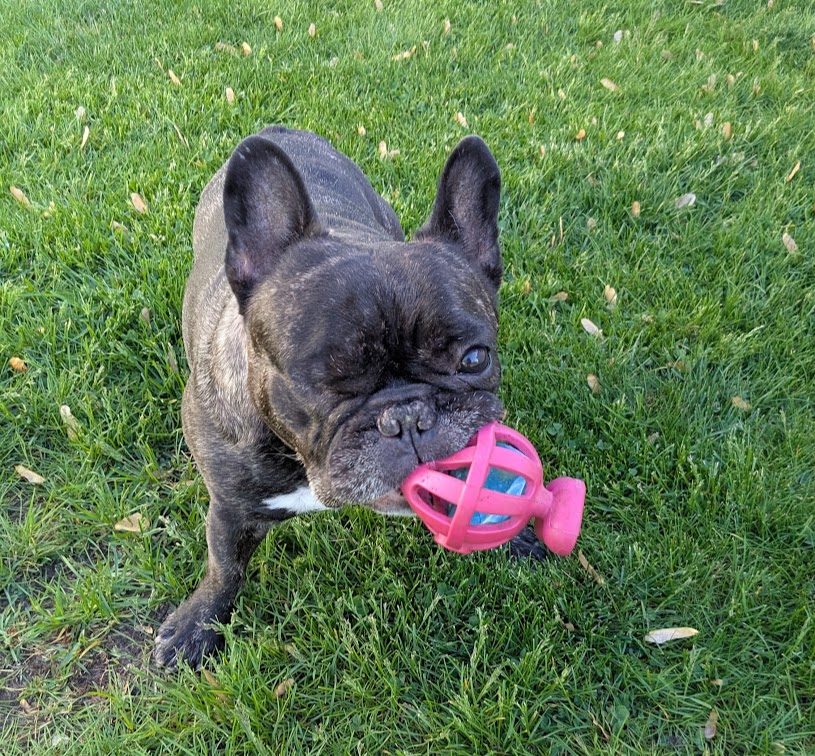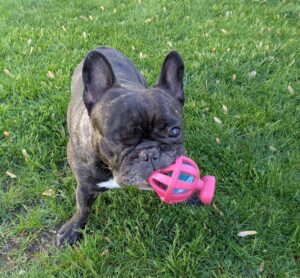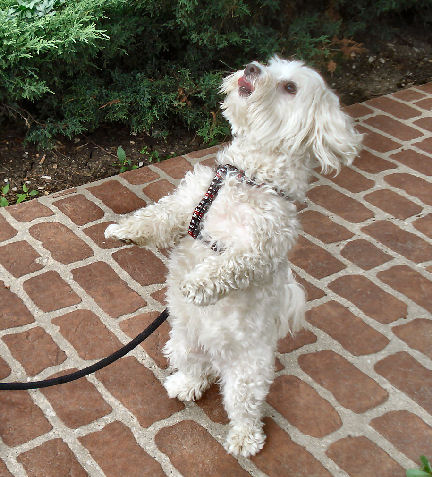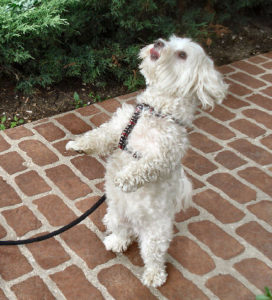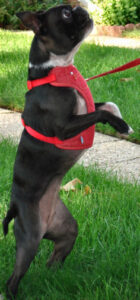The object is to teach your dog to think
Multi-tasking is a skill that can be developed in dogs as well as people. We’re not talking about a DaVinci-esque ability to write different things with each hand simultaneously. We’re not even talking about the physical coordination needed to walk and chew gum. Instead, we’re focusing on teaching your dog to think even when over-the-top excited. There’s no point in telling your dog to calm down when they’re excited. It’s like teaching a pig to sing. It wastes your time and annoys the pig. Instead, give your dog the skills to listen and decide, even in chaotic, noisy, and distracting environments.
Different levels
To set up the Arc movement puzzle, a fun derivation of Vito’s Game, gather some different-height, sturdy stools, boxes, benches, etc. big enough for your dog to stand on and able to support your dog’s weight. You’ll also need a couple flat items to start each side of the Arc. Don’t worry about collecting all of it before you get started. You’ll add on over time.
For the first session, you’ll need one low step and two flat mats. Place the step in the center and a mat to either side. You’ll also need two bowls to drop treats into and some treats. You can set up wherever you have enough room for your dog to move. This is one of the games you can play outside, weather permitting.
The objective of the puzzle, for your dog, is to move from one side to the other, stepping on each of the obstacles in the Arc each way. For the first session it’s just the three items on the curve of the Arc.
Get started
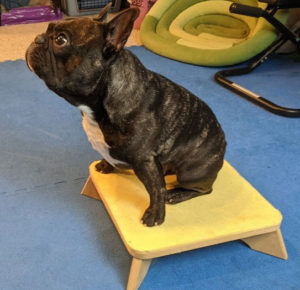
Since this is a puzzle for your dog to solve, start by setting your dog up on the small step. You’ll add the two mats later. Go stand between the two bowls. Drop a treat in one of the bowls and let your dog get it. Then look at the step. If your dog returns to the step, look at the other bowl. Just look. Don’t drop a treat in until your dog starts moving toward it.
Don’t say anything. Don’t tell your dog where to go. Remember, the object is to teach your dog to think. If you give your dog the answer, it’s not a dog puzzle, it’s you controlling your dog. You’re hinting at the answer by where you look: bowl, step, opposite bowl. That subtle cue is all your dog gets. The rest they solve on their own.
It may take a while for your dog to get the hint and figure out what you want. They may bark, scratch, fuss, etc. Ignore it. Stick with the puzzle cues. Your dog will, in time, go from bowl to step to other bowl and back again. Every time they get near the bowl, drop a treat in.
Next step

When your dog has figured out the sequence, add the two flat mats on either side of the step. The dog must step on all three objects to get the treats. Again, moving from side to side.
This puzzle keeps your dog moving and thinking at the same time. As they conquer each step, add more. Either add steps of different levels to either side, or move yourself and your bowls further away, or add tall objects to the ends of the arc for the dog to go around.
The possibilities for this game are limitless. You can add objects to circle, to crawl under, to jump over, etc. When you teach your dog to think, and as they learn the rhythm of the movement puzzle, they’ll look forward to new challenges.
Back and forth
It’s a simple concept, move back and forth to get the treats. It’s also a puzzle that’s as challenging as you choose to make it.
You won’t know where your dog’s limits are if you never test them. You could discover that there are no barriers to your dog’s possibilities. Find out. Just for the fun of it.
